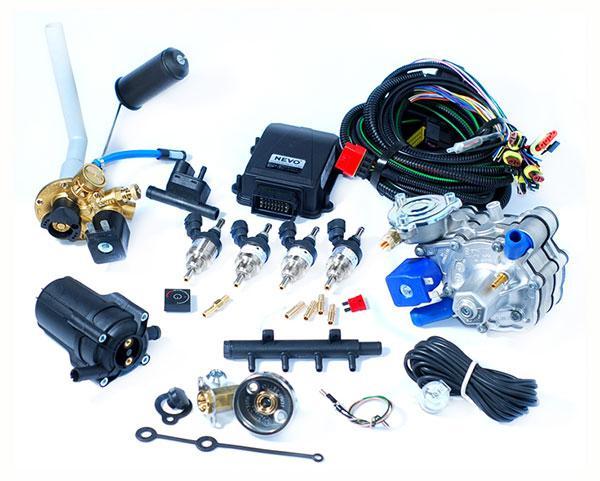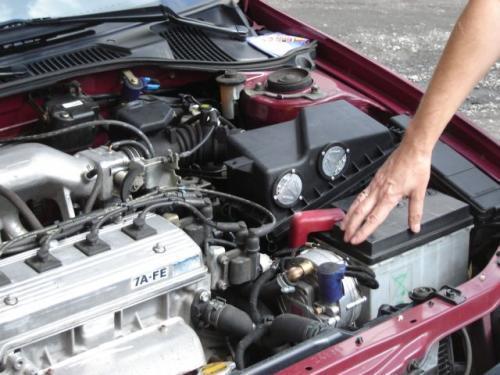
Safe gas installation
 The gas installation in the car does not significantly increase the risk for the driver and passengers, provided that elementary safety rules are observed.
The gas installation in the car does not significantly increase the risk for the driver and passengers, provided that elementary safety rules are observed.
A gas installation in a car is not a factor that significantly increases the risk for the driver and passengers, provided that elementary safety rules are observed.

Therefore, the rejection of this type of fuel is not justified because of the fear of carrying a “gas cylinder” in a car. The most important recommendation of experts - as in the case of gasoline or diesel fuel - is not to make any changes or modifications to the LPG system.
A gas fuel tank, colloquially referred to as a "cylinder", in fact, will not turn out to be a bomb if no modifications are made to the tank itself and its equipment. An important condition for safety is also refueling with liquefied gas no more than 80 percent. volume of the tank.
Specialists of the Autotransport Institute recommend:
- LPG filling took place on a flat horizontal surface, which will ensure the correct operation of the filling restriction valve,
- refueling was interrupted immediately after the opening of the valve limiting the filling of the tank,
- keep the LPG filler neck clean,
- all operations related to refueling were carried out by a gas station employee wearing gloves and goggles, and the owner of the vehicle during refueling kept a safe distance from him, since the LPG jet, which can accidentally escape to the side, causes frostbite in case of contact with the human body,
- refueling of the gas tank should be decided at a safe level of LPG in the liquid phase, equal to approximately 10% of the tank volume.
Leaks
In practice, the most common malfunction of the propane-butane gas supply system is a leak in the system. In order for the user to quickly and easily detect this fault, so-called gas is added to the gas. perfume with a distinct and unpleasant odor. The slight odor is natural and originates from the engine compartment, as only a small amount of LPG is released after the engine is stopped.
If there is a strong smell of LPG, close the two stopcocks on the gas fuel tank. A warning signal that should not be ignored should be the smell of gas that you can smell next to the car in an open area or near a gas fuel tank. Although the smell itself does not yet determine the presence of a leak, it requires a quick check.
In principle, the LPG supply system must be completely sealed. But…
Additional precautions are sometimes introduced just in case. For example, in some countries, by law (sometimes also by the rules of our housing association), cars with gas installations are not allowed to be left in underground garages and parking lots. It should be remembered that in the event of a leak in the installation, LPG flows to the lowest places (for example, in a garage into the sewer) and remains there for a long time.
And here is an important note! If in a garage with a sewer, next to a parked car with LPG, we feel a characteristic smell of gas, just in case, we push the car out into the street and start the engine only outdoors. It will be necessary to check the tightness of the tank and the supply system.
Other hazards
Any car, including those with a gasoline engine, can be damaged in an accident. What happened next? In the event of a collision, the most sensitive elements of the HBO supply system are the filling valve and the pipe connecting it to the multivalve. In case of loss of tightness of the connections of these parts or even their destruction, the gas outlet from the tank will be blocked through the check valve, which is part of the multivalve. This only means that a small amount of gas is leaving the line.
A higher risk may result from damage to the gas fuel tank. However, given the strength (steel walls a few millimeters thick) and the shape of the tank, it is unlikely that something like this would happen in practice, as well as from the side.
Finally, an event that is very rare in practice, but cannot be ruled out: a car fire. As a rule, it starts in the engine compartment, where there is little fuel, and slowly spreads - if not put out in time - throughout the car. Here are the comments of experts from the Automotive Institute:
- a car fire is controlled at an early stage,
- if the vehicle is on fire and the flames are causing the petrol and LPG tanks to heat up, stay away from the vehicle and stop if possible or at least warn other people not to approach the danger zone of fire and possible explosion.
The book titled Propane-Butane Gas Supply Systems (Wydawnictwa Komunikacji i Łączności, XNUMXth ed.) by Adam Mayerczyk and Sławomir Taubert, researchers at the Road Transport Institute, are experts in this field.
source: Motor Transport Institute

